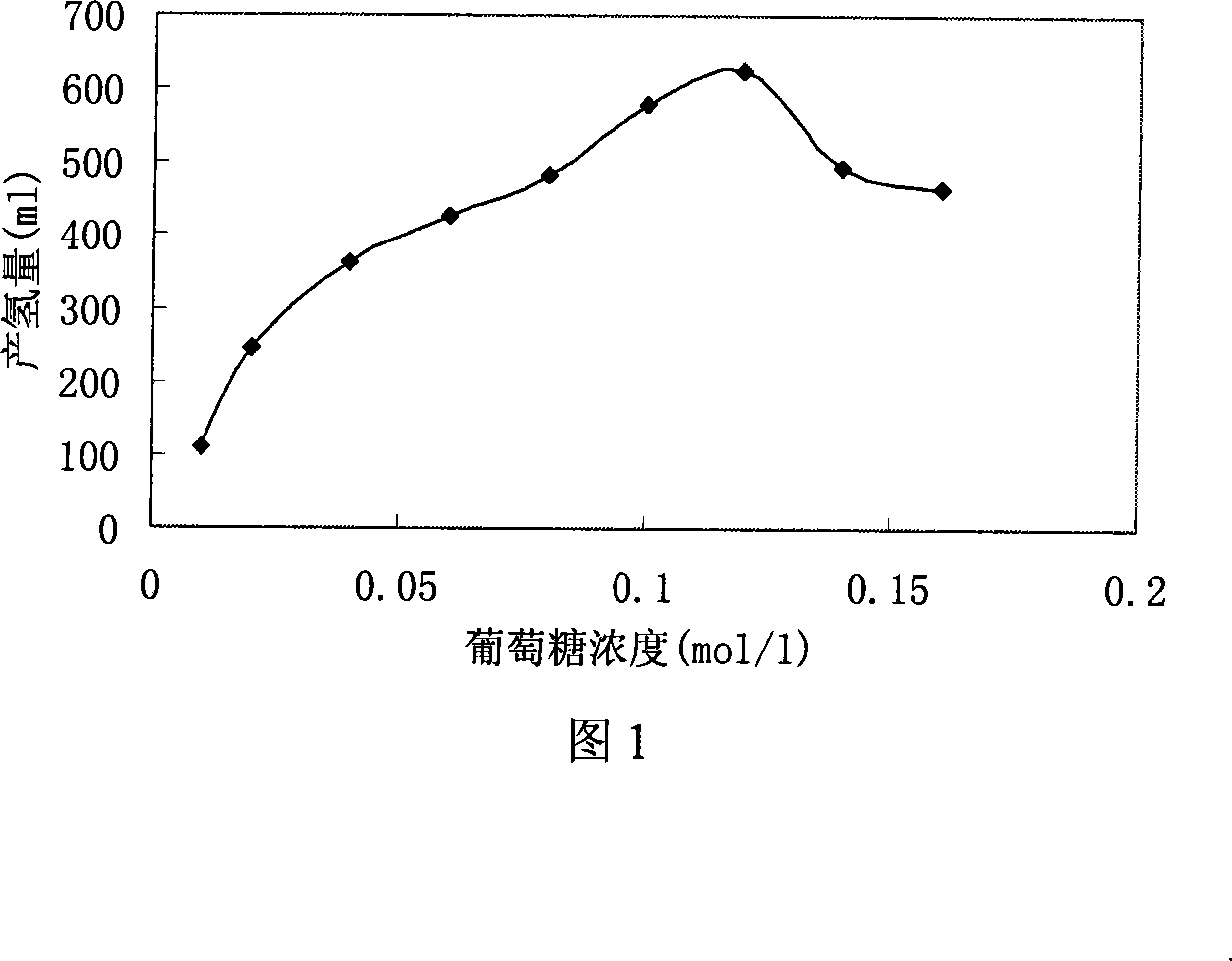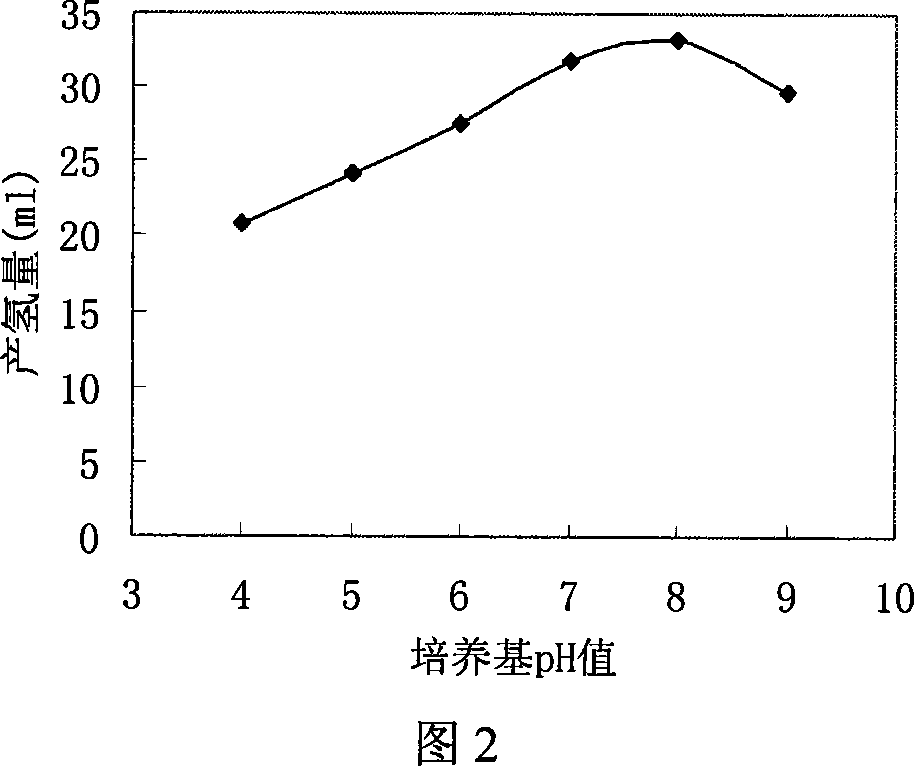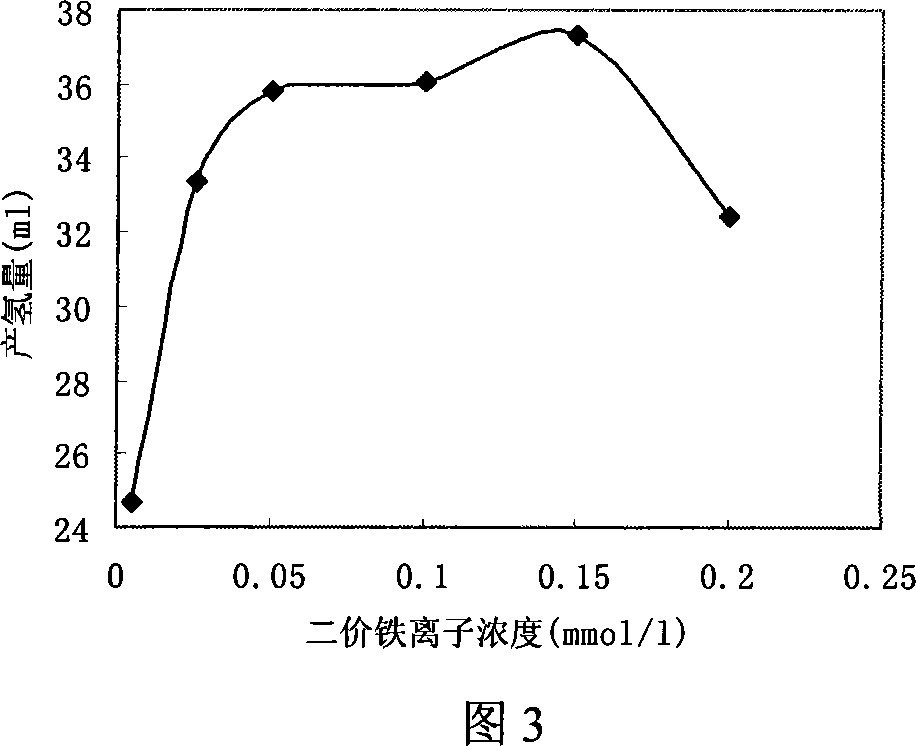Method for producing hydrogen by using marsh red pseudomonas
A swamp rhodopseudomonas, hydrogen production reactor technology, applied in the directions of microorganism-based methods, biochemical equipment and methods, microorganisms, etc., can solve the problems of inability to guarantee photosynthetic bacteria, high hydrogen production capacity, and lack of simultaneous provision of light energy, etc. , to achieve the effect of broad sustainable utilization, reduction of organic content and low cost
- Summary
- Abstract
- Description
- Claims
- Application Information
AI Technical Summary
Problems solved by technology
Method used
Image
Examples
Embodiment 1
[0030] Embodiment 1: the cultivation of Rhodopseudomonas palustris:
[0031] (1) Collection of bacteria source: Collect the upper surface silt of farmland and sewage ditches as the bacteria source, let it stand for 5 hours, and collect the supernatant; under the microscope, a preliminary microscopic examination of the type and quantity distribution of microorganisms found a large number of other miscellaneous bacteria , such as Candida, green algae, etc., the number of photosynthetic bacteria is very small;
[0032] (2) Proliferation and cultivation of Rhodopseudomonas palustris strains with hydrogen production behavior: Take 70ml of the above supernatant and pour them into 250ml Erlenmeyer flasks, add 30ml of sterilized fresh culture-based flasks at the same time, and put the supernatant Shake well with fresh culture medium, fill with argon gas to remove air, carry out static anaerobic culture, use fluorescent lamp as light source in bacterial culture, illuminance is 3000 lux...
Embodiment 2
[0039] (1) Production of the photobiological hydrogen production reactor: select transparent plexiglass as the material of the photobiological hydrogen production reactor, the thickness of the plate is 0.8cm, the length of the reactor is 10cm, the width is 5cm, and the height is 10cm. The reactor is a cuboid structure. The total volume of the reactor is 500ml, and a hole is opened on the left and right sides of the top of the reactor for filling argon and discharging air, and a hole is opened near the bottom of the reactor for liquid sampling and draining. The joint is connected to the outside, and the exhaust hole is connected to the external gas collection device for collecting hydrogen. The reactor should not leak gas or liquid except for the necessary openings;
[0040] (2) Preparation of hydrogen-producing liquid medium formula:
[0041] Glucose: 7.92g / l; K 2 HPO 4 ·3H 2 O: 0.6g / l;
[0042] K H 2 PO 4 : 0.38g / l; NH 4 Cl: 1.99g / l;
[0043] CaCl 2 : 0.1g / l; FeSO 4...
Embodiment 3
[0055] (1) liquid medium preparation: get glucose 19.8g / l; K 2 HPO 4 ·3H 2 O: 0.6g / l;
[0056] K H 2 PO 4 : 0.38g / l; NH 4 Cl: 1.99g / l;
[0057] CaCl 2 : 0.1g / l; FeSO 4 ·7H 2 O: 0.0834g / l;
[0058] ZnSO 4 : 0.0005g / l; MgSO 4 ·7H 2 O: 0.05g / l;
[0059] NaCl: 1.0g / l; CuSO 4 : 0.03g / l
[0060] (NH 4 ) 6 Mo 4 o 24 4H 2 O: 0.00075g / l; V B2 : 0.00002g / l;
[0061] Niacin: 0.00002g / l; beef extract: 3g / l;
[0062] Water: 1000ml; growth factor solution: 2ml;
[0063] Adjust the initial pH of the liquid medium to 8.0
[0064] Other conditions and steps were the same as in Example 2, and it was found that Rhodopseudomonas palustris began to produce hydrogen at 12 hours after inoculation and culture, and the hydrogen production rate was 0.5376ml h -1 l -1 , at this time the biomass (dry weight) is 0.037g l -1, when cultured to the 23rd hour, the hydrogen production rate reached the maximum, which was 14.0672ml·h -1 l -1 , the biomass is 0.28g·l -1 . From then ...
PUM
 Login to View More
Login to View More Abstract
Description
Claims
Application Information
 Login to View More
Login to View More - R&D
- Intellectual Property
- Life Sciences
- Materials
- Tech Scout
- Unparalleled Data Quality
- Higher Quality Content
- 60% Fewer Hallucinations
Browse by: Latest US Patents, China's latest patents, Technical Efficacy Thesaurus, Application Domain, Technology Topic, Popular Technical Reports.
© 2025 PatSnap. All rights reserved.Legal|Privacy policy|Modern Slavery Act Transparency Statement|Sitemap|About US| Contact US: help@patsnap.com



